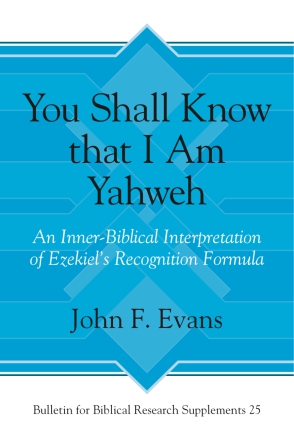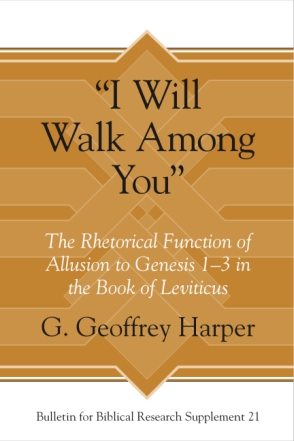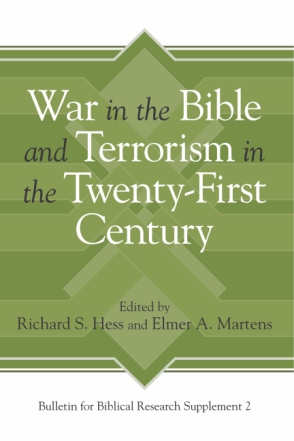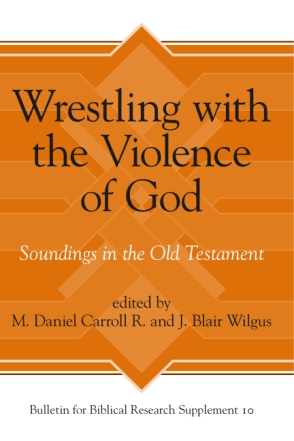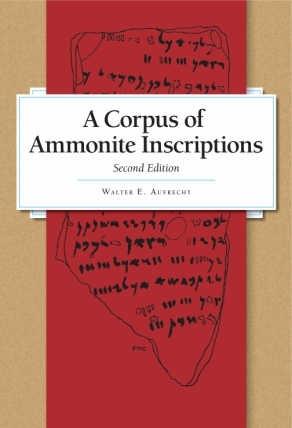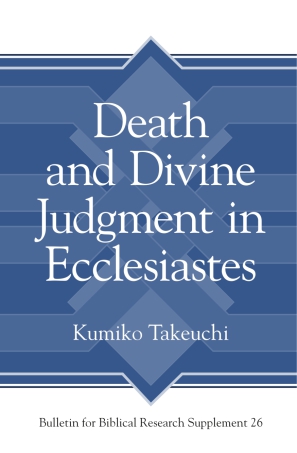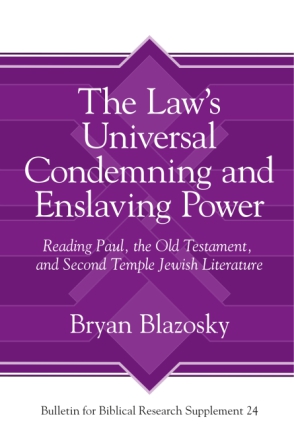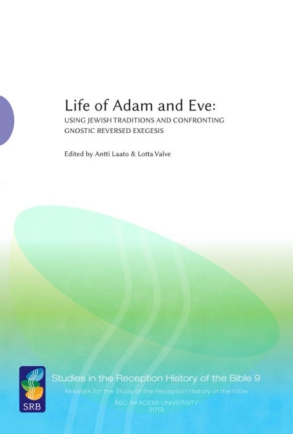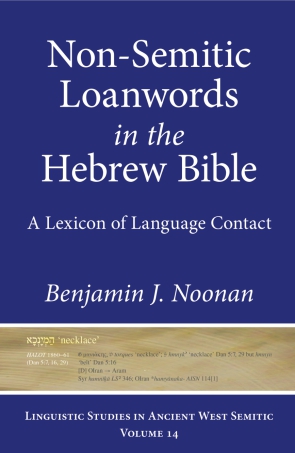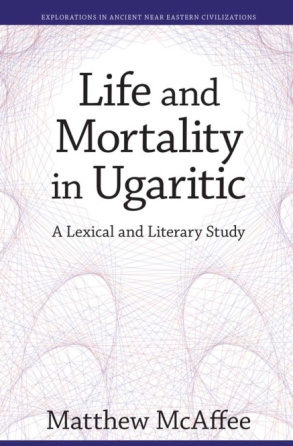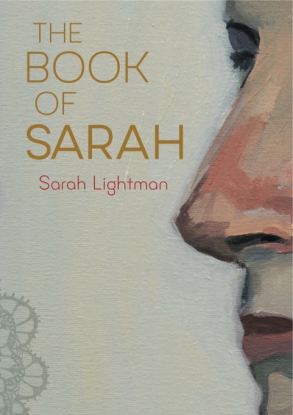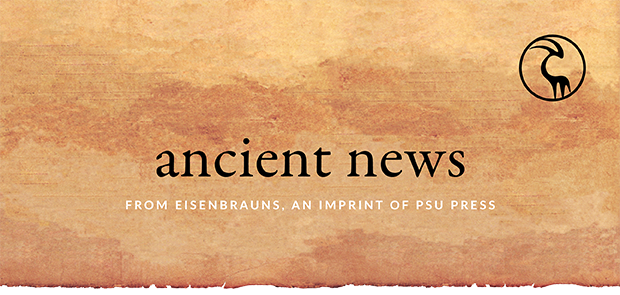
in this issue
general news
Welcome to the June issue of Ancient News. We have an assortment of good stuff for you, starting out with our 10-day sale, featuring 30–40% off Bulletin for Biblical Research Supplement Series titles. The sale ends June 20th, though, so hurry! I’ve listed some of the titles below.
We had quite a few books published this last month, with more in the pipeline. I've listed the most recent ones below, but you really should subscribe to our new release emails. Update your email preferences so you don't miss out on any of them!
I just returned from Vancouver where the atla conference took place. It was great having the opportunity to meet and renew acquaintances. Thanks to all who stopped by to browse and buy.
July will be a busy month; Jim will be traveling to the ISBL and RAI conferences. If you are attending, be sure to look over our offerings and say hi to Jim. See the upcoming events section for details.
As usual, we received some nice reviews of Eisenbrauns books this month. I’ve included excerpts from four of them below. If you happen across a review of an Eisenbrauns book, please let me know about it via email!
We’re hiring! After more than 43 years in publishing, Jim Eisenbraun is retiring. We're hiring an acquisitions editor to fill his notably large shoes. More information here.
Rounding out this month’s Ancient News are two PSU Press books that you might find interesting. Use coupon code NR18 to receive 30% off.
Enjoy!
James
new eisenbrauns books
upcoming exhibits & events
International Meeting
Rome
7/1–5
Paris, France
7/8–12
the Old Testament,
Aberdeen, Scotland
8/4–9
awards & reviews
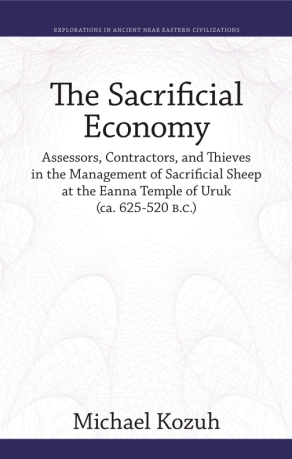
The Sacrificial Economy
Assessors, Contractors, and Thieves in the Management of Sacrificial Sheep at the Eanna Temple of Uruk (ca. 625–520 B.C.)
“The book is a substantial contribution to current research, and the presentation of new, previously unpublished, material as well as numerous references to additional unpublished texts is much appreciated. . . . Michael Kozuh raises numerous interesting issues in his discussion of the Eanna’s sacrificial economy. This book presents a number of newly published texts and many references to further material, and is likely to infuse the discussion of the complicated issue of livestock management in the Eanna with new vigor.”—Martina Schmidl, Universität Wien in Journal of the American Oriental Society 139 (2019): 236–38
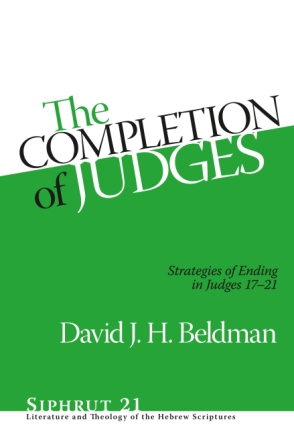
The Completion of Judges
Strategies of Ending in Judges 17–21
“In the final chapter, Beldman analyzes two asynchronic references: to Jonathan, son of Gershom, son of Moses in 18:30 and to Phineas, son of Eleazar, in 20:28. B.’s treatment of these verses is the high point of his book; the discussion is interesting and insightful. He concludes that the degeneration in Judges is not linear: ‘The real-time indicators in 18:30 and 20:28 jolt the reader to consider the shocking reality that the depths of Israel’s degradation did not necessarily occur at the end of a long process but that their rebellion and apostasy were systemic from the very beginning’ (p. 137). He effectively ties these seemingly intrusive comments with the purpose of the book as a whole.
“Beldman’s monograph is a productive and worthwhile application of literary theory to biblical narrative.”—Mary L. Conway, McMaster Divinity College, in Catholic Biblical Quarterly 81 (2019): 305–7
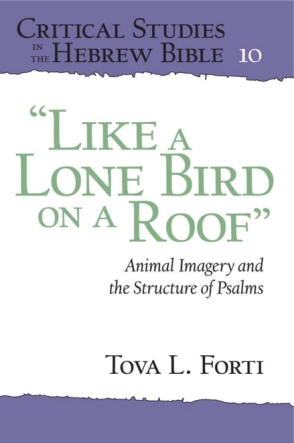
“Like a Lone Bird on a Roof”
Animal Imagery and the Structure of Psalms
“This monograph is the latest contribution to the stimulating series, Critical Studies in the Hebrew Bible. Tova Forti joins names such as Bernard Levinson and Katharine Dell, among others, in exploring specific topics of interest arising from the Hebrew Bible. The series is exceptional, and this volume continues the tradition with an examination of animal imagery in the Psalter. . .
“Forti has presented a stimulating discussion on a topic that can be easily overlooked. Animal imagery, while not infrequently used in the Psalms, can be ignored or treated superficially. This study reminds us of the significance of such imagery and the multiple effects it has on both the structuring of the text and the concepts being presented in the text.”—David Cohen, Australian College of Theology, Vose Seminary in Review of Biblical Literature, May 2019

Trees and Kings
A Comparative Analysis of Tree Imagery in Israel’s Prophetic Tradition and the Ancient Near East
“In summary, the present work, especially with regard to tree metaphors in the books of Isaiah, Jeremiah, and Ezekiel, yields a good number of textual observations. In the book of Isaiah, the connection of kingship and tree is associated above all with hubris, which puts an end to God. Osborne demonstrates convincingly that in addition to the connection of deities, especially goddesses, with trees and in addition to the idea of people and land as a tree and garden there is a very close symbolic connection of (just) king and tree. In the book of Jeremiah, tree metaphors are sometimes associated with goddess worship and idolatry, but are often positive (for example, David's sprout), while the book of Ezekiel contains particularly detailed tree and garden metaphors (including Israel as YHWH’s garden).”—Silvia Schroer, University of Bern in Biblica 100 (2019): 138–41
new from psu press
VIEW Bluelines, the PSU Press newsletter| Control your subscription options |
